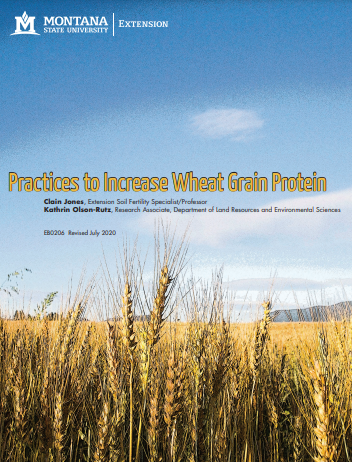To produce high grain protein there must first be enough nutrient resources to meet wheat’s requirements for vegetative growth and grain yield. Then, if available nitrogen (N) and N uptake satisfy growth and yield requirements, extra N taken up is used for increasing grain protein. Grain from wheat stressed by drought or high temperatures during grain fill frequently has higher protein, though certain crop and fertilizer management practices can increase protein without sacrificing yield, regardless of weather conditions.
Low grain protein is a financial loss to producers, especially in years with high protein discounts and premiums. On average, dryland spring wheat grown in Montana requires 3.3 lb available N/bu to reach 14 percent protein, where available N = soil N + fertilizer N (FF17, see ‘Fertilizer Facts’ on page 8). Based on a recent survey, Montana producers use an average of 2.6 lb N/bu on spring wheat. In 2010, with high protein discounts, it is estimated that this under-fertilization cost Montana spring wheat producers $25 to $60/acre. Statewide, this equates to potentially tens of millions of lost revenue dollars. This bulletin provides information on factors and practices affecting protein of both spring and winter wheat.


